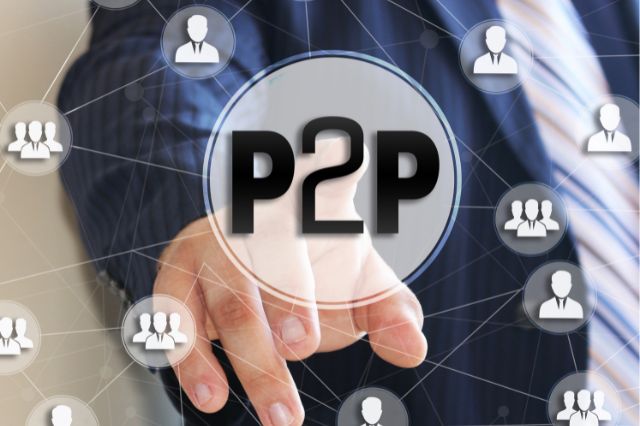Lend a Hand, Not a Headache: The Keys to Successful Peer-to-Peer Lending

In the ever-evolving landscape of personal finance, short-term and payday loans can help with unexpected expenses – but did you know there are other options? Peer-to-peer (P2P) lending has emerged as a popular alternative to traditional banking systems.
P2P lending allows individuals to borrow and lend money directly to one another, cutting out the middleman, which is typically a bank. While this can offer great advantages, it’s essential to navigate this financial frontier with caution.
In this blog, we’ll explore the keys to successful peer-to-peer lending, ensuring that your lending or borrowing experience doesn’t turn into a headache.
Understanding Peer-to-Peer Lending
Before you dive headfirst into P2P lending, it’s crucial to understand the basics. P2P lending platforms, like Prosper, LendingClub, and Funding Circle, serve as intermediaries that connect borrowers and lenders. Borrowers create loan listings, including the amount they need and the purpose of the loan. Investors (lenders) can then browse these listings, review borrower profiles, and decide which loans to fund. It’s essential to familiarize yourself with the platform’s terms and conditions, fees, and risk factors before getting started.
Risk Assessment: Don’t Skip the Due Diligence
One of the most significant advantages of P2P lending is the potential for higher returns compared to traditional savings accounts or bonds. However, with higher returns come higher risks. To ensure a successful lending experience, it’s crucial to perform due diligence on potential borrowers or lending opportunities.
- Creditworthiness: Most P2P lending platforms assign credit grades or ratings to borrowers. These ratings can help you gauge the risk associated with lending to a particular individual. Consider diversifying your investments across different credit grades to spread risk.
- Loan Purpose: Take a close look at the borrower’s stated purpose for the loan. Some purposes may be riskier than others. For example, a loan for debt consolidation might be less risky than a loan for a speculative business venture.
- Loan Term: Consider your own financial goals and liquidity needs. Longer-term loans may offer higher interest rates, but they also tie up your funds for an extended period.
- Diversification: Don’t put all your eggs in one basket. Diversify your lending portfolio across multiple loans to reduce the impact of defaults on your overall returns.
Risk Mitigation: Consider a Provision Fund
To protect against borrower defaults and potential losses, some P2P lending platforms offer a provision fund. A provision fund is a pool of money set aside by the platform to compensate investors in case of borrower default. While it’s not a guarantee against losses, it can provide an added layer of security and peace of mind.
Start Small and Gradually Increase Your Investment
As a new P2P lender, it’s wise to start with a small investment to get a feel for the platform and how lending works. Once you become more comfortable with the process and have a better understanding of the platform’s performance, you can gradually increase your investment. This cautious approach allows you to minimize potential losses while gaining experience.
Diversify Your Portfolio
Diversification is a fundamental principle of investing, and it applies to P2P lending as well. By spreading your investment across multiple loans, you can reduce the impact of defaults on your overall returns. Diversification can be achieved by investing in loans with different credit grades, loan purposes, and loan terms.
Regularly Monitor and Reinvest Returns
P2P lending is not a set-it-and-forget-it investment. To maximize your returns, regularly monitor your portfolio’s performance, and reinvest the returns you receive. Reinvesting can help compound your earnings over time, allowing your money to work harder for you.
Stay Informed about Regulatory Changes
The regulatory environment for P2P lending can change, impacting the industry’s operations and investor protections. Stay informed about any regulatory updates that may affect your lending activities. This knowledge will help you make informed decisions and adapt to any new rules or requirements.
Be Prepared for Defaults
Even with diligent research and risk mitigation strategies, some borrowers may still default on their loans. It’s essential to mentally prepare for this possibility and have a plan in place to manage defaults if they occur. Some platforms offer collections services to help recover outstanding payments, but there’s no guarantee of full recovery.
Lend with Care
Peer-to-peer lending can be a rewarding way to earn higher returns on your money or access financing. However, success in this arena requires careful consideration, risk assessment, and ongoing management. By understanding the fundamentals, performing due diligence, and staying vigilant, you can lend a hand to those in need while minimizing the potential headaches associated with P2P lending.




